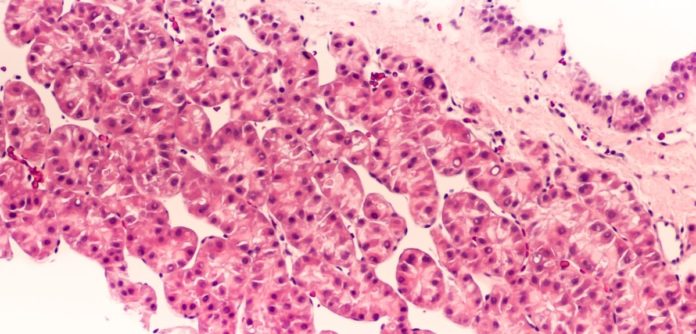Reaching therapeutic levels of cancer drugs within a tumor, while avoiding side effects for the rest of the body is a challenge for all cancer drugs, including small molecules, antibodies, and viruses.
Now a new study by the University of Oxford has developed a new way to improve the targeting of cancer drugs to tumors. The technique used ultrasound and lipid drug carriers (liposomes) to remotely triggering and enhancing the delivery of a cancer drug to the tumor.
The study is the first to the trial this new method in humans and finds that it is conceivable to securely trigger and focus on the conveyance of chemotherapy profound inside the body from outside the body utilizing focused ultrasound.
Once inside the tumor, the medication is discharged from the bearer, providing higher measurements of chemotherapy directly to the tumor, which may treat tumors all the more viable for the same or a lower fundamental dosage of the medication.
The 10-patient stage 1 clinical trial utilized focussed ultrasound from outside the body to specifically heat liver tumors and trigger medication discharge from heat-sensitive carriers, known as thermosensitive liposomes.
Expanding on finished a time of preclinical examinations, the investigation exhibited the ultrasound strategy to be achievable, safe, and fit for expanding drug conveyance to the tumor between two-overlay and ten times in the majority of patients. Continuous research worldwide is examining the relevance of this strategy to other tumor composes, and future research could investigate the mix of ultrasound with different medications.
All 10 patients treated had inoperable primary or secondary tumors in the liver and had previously received chemotherapy. The procedure was carried out under general anesthesia and patients received a single intravenous dose of 50 mg/m2 of doxorubicin encapsulated within low-temperature-sensitive liposomes (ThermoDox®, Celsion Corporation, USA).
A target tumor was selectively heated to over 39.5o C using an approved ultrasound-guided focussed ultrasound device (JC200, Chongqing HAIFU, China) at the Early Phase Clinical Trials Unit at the Churchill Hospital in Oxford. In six out of 10 patients, the temperature at a target tumor was monitored using a temporarily implanted probe, whilst in the remaining four patients ultrasonic heating was carried out non-invasively.
Dr. Paul Lyon, lead author of the study said, “Only low levels of chemotherapy entered the tumor passively. The combined thermal and mechanical effects of ultrasound not only significantly enhanced the amount of doxorubicin that enters a tumor but also greatly improved its distribution, enabling increased intercalation of the drug with the DNA of cancer cells.”
“This trial offers strong evidence of the rapidly evolving role of radiology in not only diagnosing disease but also in planning, guiding and monitoring therapy. The treatment was delivered under ultrasound guidance and patients were subsequently followed up by CT, MRI, and PET-CT, evidencing local changes in tumors exposed to focussed ultrasound,’ commented Professor Fergus Gleeson, radiology lead co-investigator for the trial.”
Professor Mark Middleton, principal investigator of the study said, “A key finding of the trial is that the tumor response to the same drug was different in regions treated with ultrasound compared to those treated without, including in tumors that do not conventionally respond to doxorubicin.”
“The ability of ultrasound to increase the dose and distribution of the drug within those regions raises the possibility of eliciting a response in several difficult-to-treat solid tumors. This opens the way not only to make more of current drugs but also targeting new agents where they need to be most effective. We can now begin to realize the promise of precision cancer medicine.”
The full paper can be read in The Lancet Oncology.
